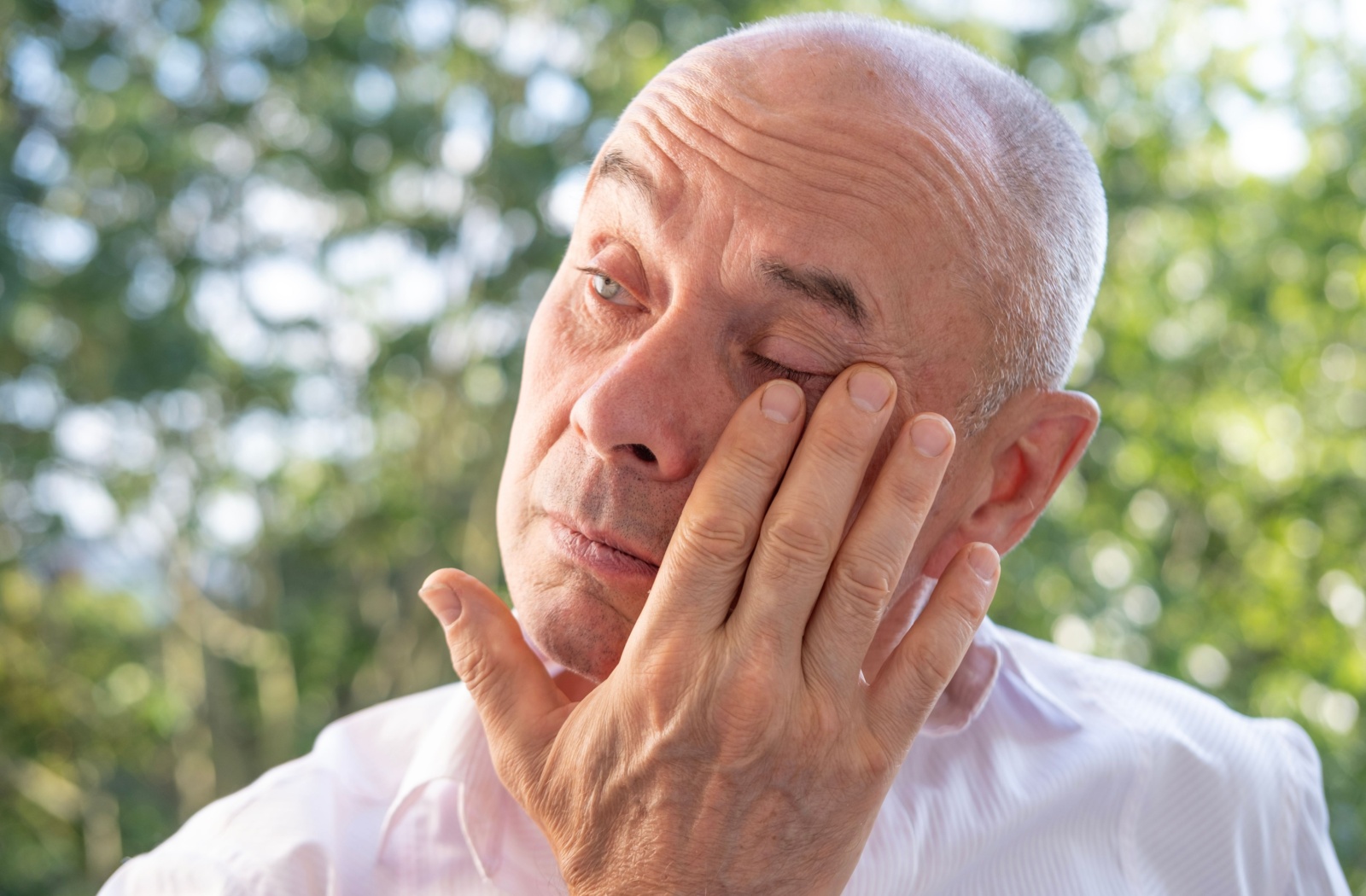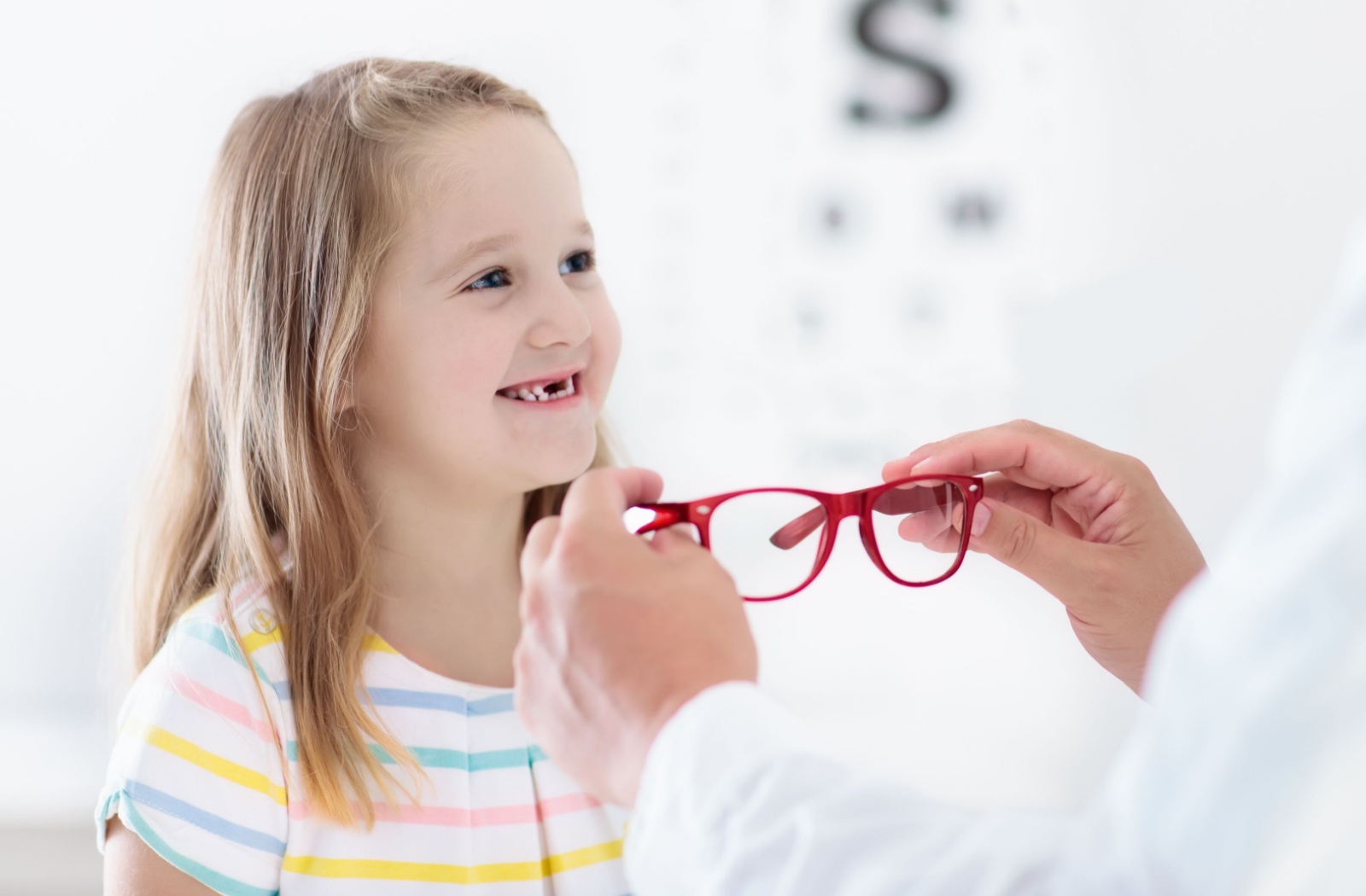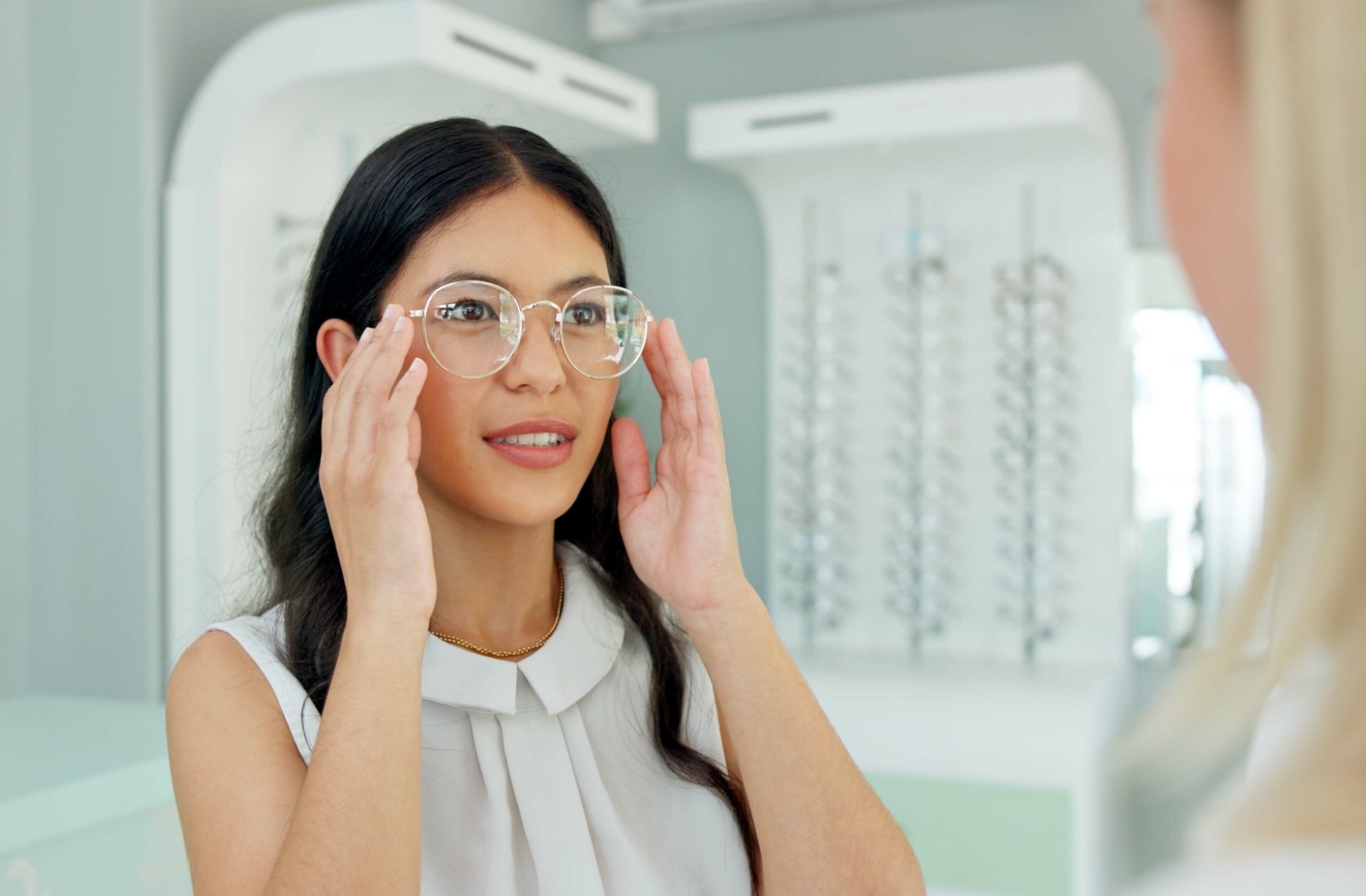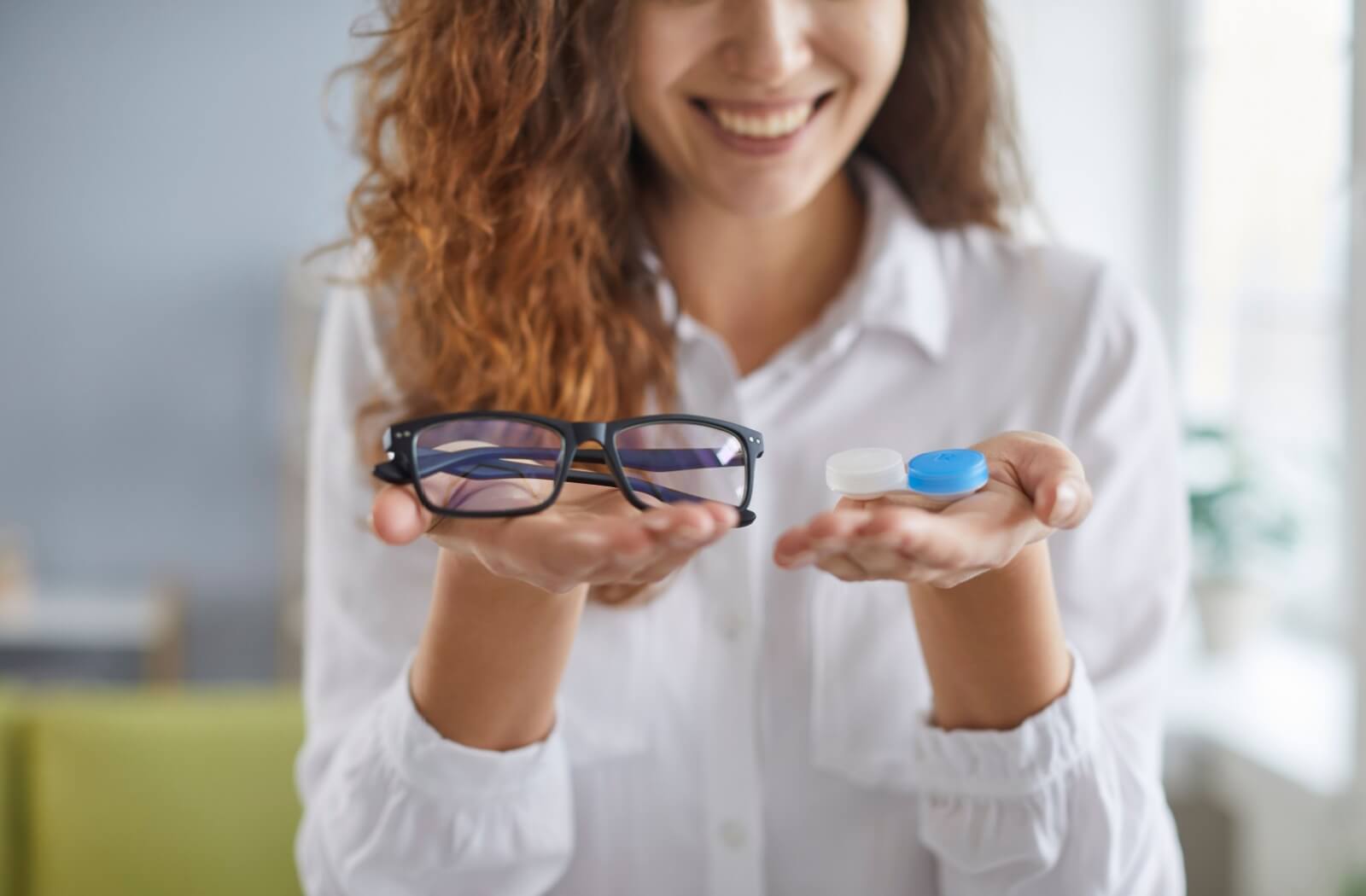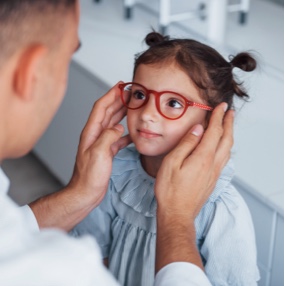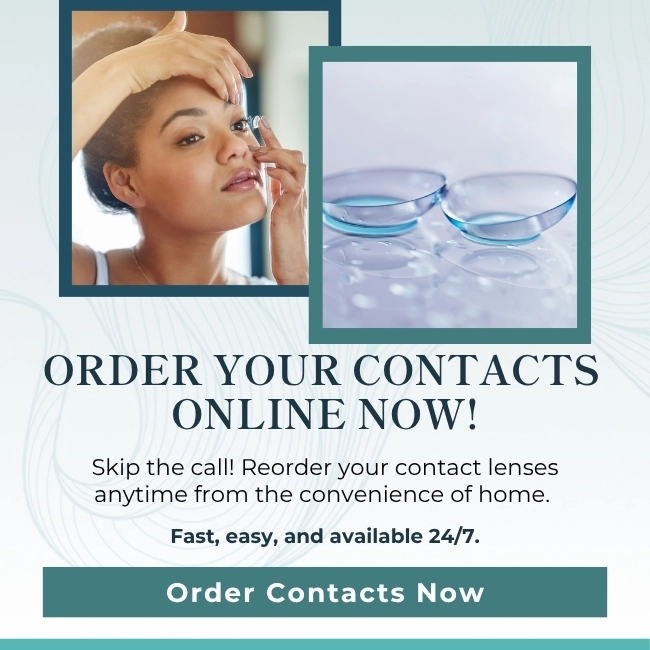Red, watery, irritated eyes can happen for many reasons, but two of the most common culprits are dry eye syndrome and allergies. Because they share similar symptoms, it’s easy to confuse one for the other, and the wrong treatment can leave you feeling just as uncomfortable.
Dry eyes are caused by a lack of quality tears, while allergies are triggered by your immune system’s reaction to irritants like pollen or pet dander.
What is Dry Eye Syndrome?
Dry eye syndrome occurs when your eyes don’t produce enough tears or when the tears evaporate too quickly. This condition has become increasingly common, particularly among students who spend hours staring at screens and young professionals juggling work and family responsibilities.
Common Dry Eye Symptoms
Some warning signs of dry eyes include:
- A gritty, sandy feeling in your eyes
- Burning or stinging sensations
- Blurred vision that improves with blinking
- Excessive tearing (your eyes overcompensate for dryness)
- Difficulty wearing contact lenses
- Eye fatigue, especially after screen use
- Stringy mucus around the eyes
What Causes Dry Eye?
Several factors can contribute to dry eye syndrome:
- Digital eye strain: Extended screen time reduces your blink rate, leading to faster tear evaporation. Students preparing for exams or parents working from home are particularly susceptible.
- Environmental factors: Air conditioning, heating systems, and windy conditions can accelerate tear evaporation.
- Age and hormones: Tear production naturally decreases with age, and hormonal changes can affect tear quality.
- Contact lens wear: Long-term contact lens use can reduce tear production and increase evaporation.
- Medications: Antihistamines, decongestants, and certain blood pressure medications can all reduce tear production.
Recognizing Eye Allergy Symptoms
Eye allergies, also known as allergic conjunctivitis, occur when your immune system overreacts to airborne particles like pollen, dust, or pet dander. Unlike dry eyes, allergies typically involve both eyes simultaneously and often coincide with other allergy symptoms.
Typical Eye Allergy Symptoms
Watch for these potential signs of eye allergies:
- Intense itching (the most distinctive symptom)
- Red, bloodshot eyes
- Swollen eyelids
- Clear, watery discharge
- Sensitivity to light
- Dark circles under the eyes
- Accompanying nasal symptoms like sneezing or congestion
Common Allergy Triggers
Understanding your triggers helps differentiate allergies from dry eyes:
- Seasonal allergens: Tree pollen (spring), grass pollen (early summer), and ragweed (fall) cause predictable flare-ups.
- Year-round triggers: Dust mites, pet dander, mold, and household chemicals can cause persistent symptoms.
- Environmental irritants: Smoke, strong perfumes, and air pollution can trigger allergic reactions in sensitive individuals.
Key Differences Between Dry Eyes & Allergies
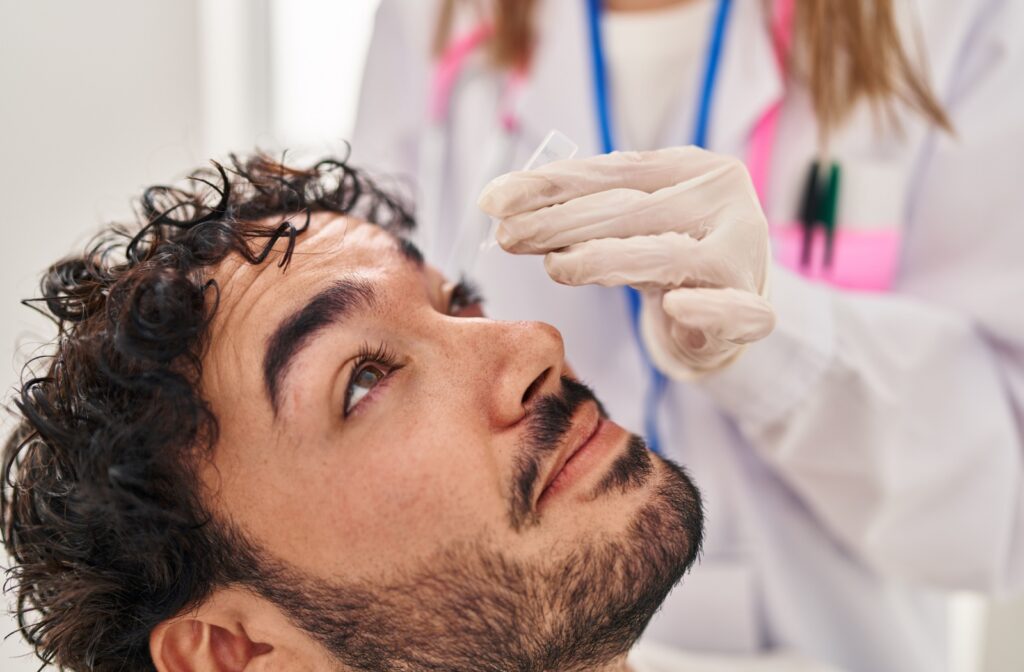
While both conditions can cause red, irritated eyes, several factors help distinguish between them:
Symptom Timing
- Dry eyes: Symptoms typically worsen throughout the day, often during activities requiring sustained focus.
- Allergies: Symptoms often appear suddenly upon exposure to triggers and may follow seasonal patterns or occur after contact with specific allergens.
Itch Factor
- Dry Eyes: Rarely cause significant itching. Instead, you’ll experience burning, stinging, or a foreign body sensation.
- Allergies: Intense itching is the primary complaint, often accompanied by an irresistible urge to rub your eyes.
Associated Symptoms
- Dry Eyes: Usually isolated to the eyes, though you might experience general eye fatigue.
- Allergies: Often accompanied by nasal congestion, sneezing, throat irritation, or skin reactions.
Treatment Options for Dry Eye & Allergies
Prevention Strategies for Eye Allergies
Here are some prevention strategies to help with eye allergies:
- Monitor pollen counts and limit outdoor activity on high-pollen days
- Keep windows closed during allergy season
- Use air purifiers with filters
- Wash bedding in hot water weekly to eliminate dust mites
- Consider allergy-proof pillowcases and mattress covers
If allergy symptoms such as itching, redness, or swelling persist despite these measures, consult your eye doctor. An optometrist can help assess whether your discomfort is allergy-related or due to another condition and recommend management options.
Everyday Comfort Tips for Dry Eyes
If you’re experiencing discomfort due to dry eyes, consider following these tips:
- Take regular breaks from screens using the 20-20-20 rule
- Try to increase your blink rate consciously, especially during digital device use
- Use a humidifier in your workspace or bedroom to prevent dryness
- Stay hydrated by drinking plenty of water throughout the day
Professional Treatment Options for Dry Eyes
For more severe cases of dry eye, speak to your eye doctor about professional treatment:
- Comprehensive dry eye assessment: Diagnostic tests such as Schirmer’s test, tear breakup time, and ocular surface evaluation to determine the cause of dryness
- Meibomian gland expression & eyelid debridement: Clears blocked oil glands to improve tear quality
- Punctal plugs: Small inserts placed in the tear ducts to help retain moisture
- Prescription medicated eye drops: Targeted medication to increase tear production and reduce inflammation
- Eyelid sprays & hygiene products: At-home care to keep eyelids clean and comfortable
Treatment Options for Dry Eye & Allergies
Persistent eye irritation can disrupt your focus at school, work, and home. At Clarity Optometry, we take the time to determine whether your symptoms stem from dry eyes, allergies, or another issue, and recommend treatment that brings lasting comfort. Don’t put up with discomfort any longer. Book your appointment with Clarity Optometry today and take the first step toward clear, comfortable vision.

